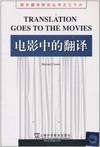电影中的翻译
出版时间:2011-3 出版社:上海外教 作者:克罗宁 编 页数:145
Tag标签:无
内容概要
本书深入浅出地将翻译理论与广义的电影翻译联系起来,不仅为读者扼要介绍了翻译理论与实践中的诸多核心问题,而且生动展示了这些问题在电影中如何得以表现,并以跨学科研究的方式论述了电影翻译与文化、社会、身份认同、移民、冲突、行为表现.全球化等问题的密切关系。本书脉络清晰,视角新颖,采用从默片到多部新近的电影为例证,提出了独到的见解,对传播学、翻译学、文化学等领域的师生、学者,以及对电影研究感兴趣的普通读者均有极高的参考价值。
作者简介
迈克尔·克罗宁,都柏林城市大学翻译与文本研究中心讲座教授、主任,著有多部专著,如《翻译爱尔兰》(Translating
Irelad,1996)、《翻译与全球化》(Translation and
Globalisation,2003)以及《翻译与身份》(Translation and Identity,2006)等。
书籍目录
List of film stills
Acknowledgements
Introduction: the full picture
1 Translation: the screen test
2 The frontiers of translation: Stagecoach to Dances with
Wolves
3 Translation howlers: A Night at the Opera to Borat
4 The long journey home: Lost in Translation to Babel
5 The empire talks hack: translation in Star Wars
Bibliography
Index
章节摘录
版权页:The crucial word in Smith's analysis is 'mute.' The 'talkies' have not renderedaudiences speechless. Film spectators before and after films are coopted intoa network of anticipation and commentary, which has translation into locallanguage as a core element of the filmic experience. The socially mediatedactivity of language is crucial to the reception of the most all-pervasive ofblockbusters, and speakers as the active agents and speakers of languagewithin speech communities make of translation a dynamic process fromwhich effects cannot be anticipated or prescribed in an artful centripetalconspiracy. This is not to say, however, that the language of production is not withoutits effect The same teenagers who eagerly commented on Hollywoodblockbusters in Flemish were largely sceptical of the idea that interesting orentertaining films could be produced in their mother-tongue.The charmed circle of languageacquisition and cultural prestige was thus very much in evidence. As a con-sequence, however, in the case of other foreign-language films, '[qailure tocomprehend the dialogue does not merely reduce enjoyment in a particularfilm, it also promotes a negative attitude in general towards films in thatlanguage' (168). In other words, not only is watching film, as we have notedearlier, embedded in a language of reception but also the film itself becomessynonymous with language or rather with the on-screen experience of oneparticular language, English. For teenagers in Flanders used to listening toEnglish in a local audio-visual culture largely averse to dubbing, the Englishlanguage and cinematography were one and the same thing. Giovanni Scognamillo writing about the enthusiasm of Turkish audiencesfor Hollywood films during and after the Second World War argues that theywanted, 'action, wealth, spectacle and glamour[…]excitement and emotion.They want dreams and they pay to have their dreams' (Scognamillo 1991: 67).What Hollywood offered to audiences was a realm of fantasy, of make-believe, of a life that was more glamorous, more exciting than the humdrumreality of the local.
编辑推荐
《电影中的翻译》是国外翻译研究丛书之36。
图书封面
图书标签Tags
无
评论、评分、阅读与下载
用户评论 (总计10条)
- 电影翻译可谓方兴未艾,而且许多翻译问题多多,这是一本指导电影翻译的佳作,值得大家一看。特别是研究字母翻译的同学哦
- 这本书是最新的关于国 外新闻翻译的书籍,薄薄的一本小书,但很实用,值得买本看看
- 理论结合趣味 喜欢
- 书很好,价廉物美。谢谢,下次再买。
- 无可挑剔的一套书,每出必买。
- 买回来一看好薄~再一看排版的也太密集了,无语了,字太小了。
- 《电影中的翻译》起源于作者克罗宁为学生开设的一门课程,他在这门课上为学生们放映一些非常著名的好莱坞经典影片和当代票房大片,如,Lost in Translation(《迷失东京》)、The Interpreter (《翻译风波》)、Borat(《波拉特》)、 Babel(《通天塔》)等,借以引导学生们去发现这些影片中被人们忽略的、与翻译相关的因素, 如,影片中所反映出来的人们对翻译的态度和对翻译进行的思考。因此,该书实际上是"透过电影看翻译"(translation in movies),而不是通常所说的"电影翻译"(translation of movies).
- 好,适合翻译专业的研究生使用。全英的
- 以为是中文版呢,没想到是英文版
- 这本书是引入外文作品,全英文,需求中文翻译!
相关图书
- 当代汉语公共话语中的篇际互文性研究
- 译本世界与现实世界的碰撞
- 全球化语境下的译者素养
- 国际新闻翻译
- 中国高校英语专业写作测试效度检验研究
- 翻译文体学研究
- 金牌奥赛考试高手 语文六年级
- 金牌奥赛考试高手 语文四年级
- 高中化学
- 化学
- 同步培优新课堂 8年级物理
- 文学研究的生态学隐喻
- 初中英语完形填空精读精练
- 大学语文
- 南宋临安文化
- 最受农民朋友喜爱的99个对联故事
- 最受农民朋友喜爱的99个文臣故事
- 最受农民朋友喜爱的99个帝王故事
- 最受农民朋友喜爱的99个寓言故事
- 最受农民朋友喜爱的99个神话故事
- 最受农民朋友喜爱的99个成语故事
- 最受农民朋友喜爱的99个武将故事
- 建筑构造
- 楼宇智能化系统与技能实训
- 中俄科技合作中的知识产权法律保障问题研究
